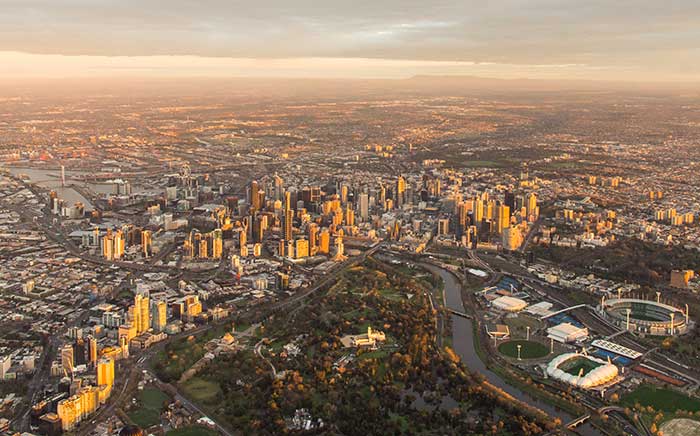web_melbourne_shutterstock_177735629.jpg

Melbourne, Australia has won the title of the world's most liveable city for the sixth year in a row.
Out of the 140 cities surveyed, Melbourne is followed by Vienna in second place with three Canadian cities – Vancouver, Toronto and Calgary – close behind, all of which have held on to their titles from last year.
Great day to be a Melburnian. #MostLiveableCity again! #Melbmoment @thats_melbourne pic.twitter.com/xN2hN1QiyS
— Robert Doyle (@LordMayorMelb) 18 August 2016
Also in the top 10 are two other Australian cities – Adelaide and Perth – New Zealand’s Auckland, Helsinki in Finland and Hamburg in Germany.
The world’s least liveable cities include war-torn Damascus at the bottom, followed by Tripoli in Libya, as well as Lagos, Dhaka, Karachi, Harare and Kiev.
The ranking rates cities based on their score across five different categories: stability, which include crime, terror, conflict and unrest; healthcare, which covers the availability and quality of public and private healthcare and over-the-counter drugs; culture and environment – a broad category ranging from temperature to corruption; education; and infrastructure.
The poorest-scoring cities all occupied the very bottom tier of liveability, where the Economist judges that “most aspects of living are severely restricted”.
All 13 that fall into this category have been touched by civil war or insecurity, with threats from groups like Boko Haram in Lagos or Islamic State in Tripoli prompting sharp declines in liveability.
“Conflict is responsible for many of the lowest scores,” the report said. “This is not only because stability indicators have the highest single scores but also because factors defining stability spread to have an adverse effect on other categories.”
Conflict will damage infrastructure, overburden hospitals and undermine the availability of goods and services, for example.
Even cities in the top tier are being touched by an increase in violence and global instability. No city in the top tier registered an improvement in their score in the last 12 months, and changes for the 17 cities that did see a difference in score since last year were “overwhelmingly negative”, the report said.
Overall, the global liveability score fell by 0.9 to 74.84% over the past five years. One quarter of that decline came in the past year, with weaknesses in stability being the key driver.
The report said the worldwide growth in terror threats is weighing on the globe’s stability rating.
This has been made “uncomfortably apparent by a number of high-profile incidents that have not shown any sign of slowing in recent years”, it said.
“While not a new phenomenon, [terrorism’s] frequency and spread have increased noticeably and become even more prominent in the past year.”
Other factors that have brought scores down is the increase in the deaths of black people at the hands of police officers in the US, for example.
The report highlighted some trends among the types of cities that sit at the very top of the ranking.
“Those that score best tend to be mid-sized cities in wealthier countries with a relatively low population density. These can foster a range of recreational activities without leading to high crime levels or overburdened infrastructure,” it pointed out.
On the other hand, it noted that “global business centres seem to be victims of their own success”, overstretching infrastructure and causing higher crime rates. New York, London, Paris and Tokyo all suffer higher levels of crime, congestion, and public transport problems than are deemed “comfortable” by the rating.













